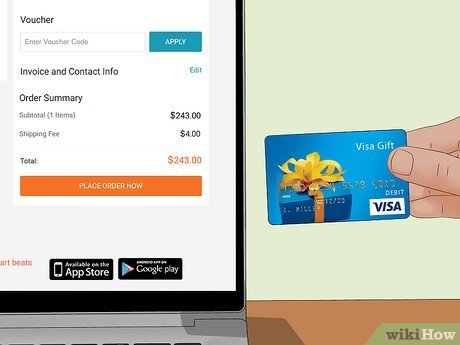How to Accept Credit Card Payments as a Freelancer
Picture a seamless transaction where your client effortlessly pays with a swipe of their card, while you focus on delivering quality work. As a freelancer, accepting credit card payments can enhance your professionalism and streamline cash flow, but it also raises questions about choosing the right payment processor and ensuring security. You might find yourself wondering which steps to take first, or how to navigate the complexities of fees and compliance. Let's explore the essential elements that can make this process smooth and efficient.
Understanding Credit Card Payments
Understanding credit card payments is essential for freelancers looking to streamline their transactions and enhance client satisfaction. When you accept credit cards, you're providing clients with a convenient payment option, which can lead to quicker payments and increased loyalty. Familiarizing yourself with terms like transaction fees, chargebacks, and authorization holds is vital for maintaining financial security. Each credit card transaction typically incurs a fee, often a percentage of the total amount, which can affect your earnings. Additionally, understanding the risks associated with chargebacks—when clients dispute a charge—helps you protect your income. By mastering these aspects of credit card payments, you can create a safer, more efficient transaction process that benefits both you and your clients.
Choosing a Payment Processor
When selecting a payment processor, it's important to evaluate your specific needs, as different platforms offer varying features, fees, and levels of customer support. Consider these three key factors to guarantee you choose the right option for your freelance business:
- Transaction Fees: Review the fee structure, including percentage rates and fixed charges, to understand how much you'll pay per transaction.
- Security Features: Look for processors that comply with PCI DSS standards and offer fraud protection to keep your customers' information safe.
- Integration Capabilities: Confirm the processor can seamlessly integrate with your existing tools, like invoicing software or websites, for a smooth payment experience.
Taking the time to analyze these aspects will help you make an informed decision.
Setting Up a Merchant Account
After choosing the right payment processor, the next step is to set up a merchant account, which allows you to accept credit card payments directly from your clients. To begin, you'll need to gather essential documentation, such as your business license, tax identification number, and bank account information. Most providers will conduct a credit check, so make certain your financials are in order.
Once your application is approved, you'll receive a unique merchant ID, which is critical for transactions. It's important to read the terms carefully, including fees and processing times, to avoid surprises. Prioritizing a secure merchant account protects both you and your clients against fraud, guaranteeing safe transactions and fostering trust in your business.
Integrating Payment Solutions
Integrating payment solutions into your freelance business is essential for streamlining transactions and enhancing client experience. To effectively implement these systems, consider the following:
- Choose the Right Payment Gateway: Research and select a gateway that aligns with your business needs, offering competitive fees and reliable service.
- Automate Invoicing: Use software that allows you to create and send invoices automatically, making it easier for clients to pay promptly.
- Offer Multiple Payment Options: Cater to diverse client preferences by accepting various payment methods, including credit cards, PayPal, and bank transfers.
Ensuring Security Compliance
Guaranteeing security compliance is crucial for freelancers who handle credit card payments, as it protects both your business and your clients from potential fraud and data breaches. To maintain compliance, familiarize yourself with the Payment Card Industry Data Security Standard (PCI DSS), which outlines essential security measures. Make certain your payment processing system encrypts sensitive information and regularly updates software to mitigate vulnerabilities. Use secure internet connections and consider two-factor authentication for added protection. Regularly review your security protocols and data handling practices to confirm they align with industry standards. By prioritizing these measures, you'll not only safeguard your clients' information but also enhance your credibility and trustworthiness as a freelancer in a competitive market.
Invoicing and Payment Requests
When you're freelancing, crafting clear and professional invoices is essential for ensuring timely payments and maintaining a positive relationship with your clients. A well-structured invoice not only reflects your professionalism but also minimizes confusion. Here are three key components to include in your invoices:
- Detailed Itemization: Clearly list services provided, hours worked, and rates to avoid misunderstandings.
- Payment Terms: Specify due dates and accepted payment methods to set clear expectations.
- Contact Information: Include your email and phone number so clients can easily reach you with questions or concerns.
Managing Transaction Fees
After setting clear payment terms in your invoices, it's important to contemplate how transaction fees can impact your earnings as a freelancer. These fees can vary considerably among payment processors and can eat into your profits if not managed properly.
Here's a comparison of common transaction fees:
| Payment Processor | Fee Structure | Average Fee |
|---|---|---|
| PayPal | 2.9% + $0.30 per transaction | $3.20 on $100 |
| Stripe | 2.9% + $0.30 per transaction | $3.20 on $100 |
| Square | 2.6% + $0.10 per transaction | $2.80 on $100 |
| Venmo | 1.9% + $0.10 per transaction | $2.00 on $100 |
| Zelle | No fees | $0.00 |
Tracking Payments and Reporting
Effectively tracking payments and reporting on your earnings is essential for maintaining a clear financial picture as a freelancer. Accurate records help you stay organized and can protect you during audits or disputes. Here are three key strategies to contemplate:
- Use Accounting Software: Invest in reliable accounting software to automatically track payments, categorize expenses, and generate reports. This minimizes human error and saves time.
- Regular Reconciliation: Consistently reconcile your accounts to guarantee that your records match your payment processor's reports. This helps identify discrepancies early.
- Detailed Invoices: Send detailed invoices that outline services provided, payment terms, and due dates. This not only clarifies expectations but also serves as a reference for future tracking.
Staying vigilant with these practices enhances your financial safety.





